Queer & Now & Then: Introduction/1979
This is the inaugural essay in a new biweekly column, Queer & Now & Then.
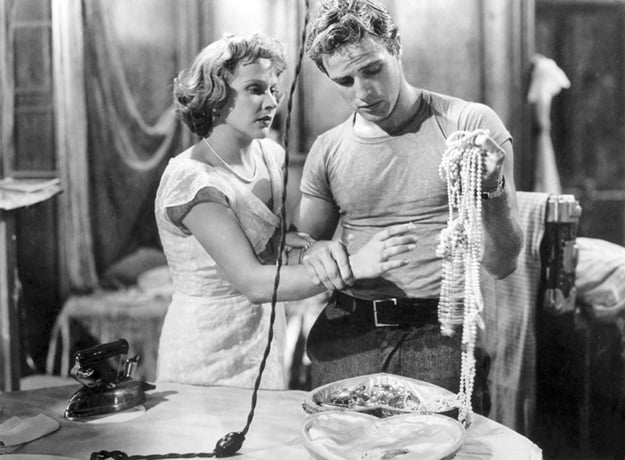
A Streetcar Named Desire
You are what you eat, but odds are great that you aren’t what you watch. As individuals each of us is too singular, too complicated, too erratic, and too imperfect to be truly reflected on the screen. For true movie addicts, who devour as many different kinds of films as possible and dig into the past of the medium to have a better understanding of its present, there’s perhaps even less of a chance of seeing oneself onscreen. For all its underdogs, its sensitivity to emotional hardship, its dark corners and shadows and dim lights, cinema hasn’t been particularly interested in the marginalized, which is one reason for the rabid hope so many seem to have today for a definitive paradigm shift.
Queerness is just one of many fraught areas of representation, but the one I’ve been the longest attuned to, or at least the one whose frequencies my antennae have longest been seeking—whether, early on, I knew it or not—so when discussing marginalization in cinema, it’s the one my mind readily goes to. It’s also why, when I think of my young self, holed up in my childhood bedroom with my 13-inch television and VCR, my weekly stacks of eight videotapes (four from each local library—the lending limit), I now realize that I was at once trying to understand an art form and locate in it the self, whatever that may be. There was a clear absence of gay characters—no, a gaping maw—and it was so pronounced that when one showed up, even gay or latently gay viewers could be made to feel as uncomfortable by their presence as straight viewers have been so long trained to feel. As continually elucidated in Vito Russo’s The Celluloid Closet, recurring gayness was a disruption in the course of film history. Heteronormativity was especially appealing because the narratives we had come to love—the shipboard romances, the thrillers in exotic locales, the inspiring biopics of admirable heroes—depended on it, and keeping cinema copacetic meant maintaining the status quo. A sudden gay character would come to seem like a revelation and a betrayal, the thing we hoped for, but also hoped would just go away, back into life’s dark recesses.
Further complicating matters for me was that on the screen, men seemed willfully uninteresting. The Cagneys and Coopers and Costners were either too rambunctious or reserved; larger-than-life figures who appeared small because of their emotional hang-ups. And they were rarely fully eroticized; with the exception of Marlon Brando in A Streetcar Named Desire—a figure of sexual shock, a sweaty, shirtless herald from above, the visual impact of which I’ve still yet come to terms with—men were merely utilitarian, carrying their bodies the way they carried the story, or a briefcase. So in the absence of compelling men, I looked to women, the main source of movie identification for me and so many other gay men. Whether they were objectified or emboldened, the victims in a De Palma thriller or the aggressors in whimsical tales of professional empowerment, women held the screen, becoming both something like the desired object and a projection of the self doing the desiring. To a naïve young movie-watcher blithely unaware of the struggles of women both in the industry and the world beyond, women seemed to be the ones in control: Bette Davis, Jane Fonda, Katharine Hepburn, Meryl Streep, Jessica Lange, Sissy Spacek, Whoopi Goldberg, Emma Thompson, Gong Li. In what world were they not running the show?
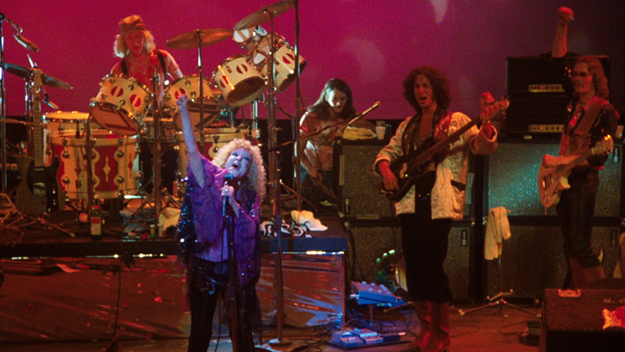
The Rose
The conundrum of being a young, burgeoning gay cinephile, then, is the muddling of desire, identification, and aspiration. The responsibility of being a gay film critic, then, to borrow a phrase from the great Robin Wood, is to be honest about your responses as an individualized viewer, and to balance questions around identity with a film’s aesthetic purpose, intent, and effect. Wrote Wood, “There is in a sense no such thing as ‘the films of Ingmar Bergman,’ existing as an entity that criticism could finally and definitively describe and interpret and place in the museum. Rather, the films exist as experienced and perceived by the viewer, with the precise nature of the experiencing depending on the viewer’s position in society and within ideology.”
Identification should not be the sole goal of any watcher, of course, for having your experiences projected in front of you can create little more than a feedback loop, reconfirming entrenched beliefs and preconceptions; but it’s also unavoidably a part of what makes one a movie addict, the need to return again and again to a safe place. Perhaps what we need is evidence: not just that we are here, and that we were there, but that the desire that coursed through the blood of so many gay men and women, who often worked behind the scenes or onscreen from a place of closeted silence, somehow found its expression in the images we were taking in. The not-belonging of queerness, the sense of somehow existing outside of the carefully sculpted time and space of heterosexual forward motion, is what gives the queer gaze its urgency and its power; queer theorist Elizabeth Freeman writes about queer culture in starkly beautiful, melancholy terms: “I think the point may be to trail behind actually existing social possibilities: to be interested in the tail end of things, willing to be bathed in the fading light of whatever has been declared useless.”
Of course, queerness is a loaded, complicated theoretical term, which at this point exists both quite apart from homosexuality per se and inextricably tied to it. Often used as a catchall word for a kind of de-normalization, an escape from hetero-land, queer is among the most malleable conceptions one can apply to identity and art, a means to locate the self by defining it against a perceived mainstream. Nick Davis, in the introduction to his essential 2013 book The Desiring-Image, writes eloquently of the difficulty in these definitions: “What becomes difficult, though, is gaining a purview on erotically challenging cinema that moves in and out of LGBT frameworks—films that show how desire shape-shifts in relation to politics, aesthetic forms, coalitional pressures, sociocultural positions, current objects or partners, and yes, identity claims. In all these ways, desire changes over time, sometimes rapidly, and often holds contradictory truths in place at once.” The reality that queer image-making has an inherently oppositional stance has led some to pigeonhole queer art, but it can contain multitudes of expression. The explosion of the New Queer Cinema in the eighties and early nineties (made possible by four elements, wrote B. Ruby Rich: “the arrival of AIDS, Reagan, camcorders, and cheap rent”) created a wealth of new images, both positive and—sometimes productively—not. But it has not remotely led to a mainstreaming of gay characters in American cinema. A major studio film with a gay main character is still as frequently spotted as a rainbow-colored unicorn. The devotional response from gay viewers to 2017’s Call Me by Your Name provides key evidence of the continuing vacuum of representation: usually one film a year—if we’re lucky—must still bear the burden of being The Gay Film, always too much for one film to take. (In 2016, Moonlight was able to use what could have been perceived as twin handicaps—it was film with a gay African-American protagonist—as advantages; of course it helped that it was a film of uncommon sensitivity and artistry.)
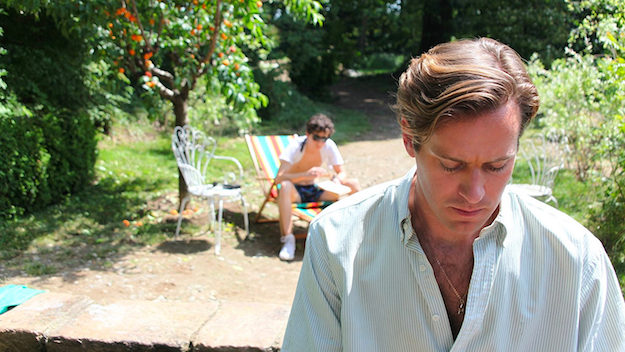
Call Me by Your Name
In my nearly four decades as a movie addict, I’ve been looking for clues, whether I knew it or not. Cinema hasn’t always been responsive, but it’s left some breadcrumbs; I just need to go back to find the trail. Hence this is the first entry in a new biweekly column in which I return to the hunt, back through the annals of my movie-watching, and try to uncover the queerness in the films of years past. The plan is to delve into one film per year per column, hopscotching through the decades, and hopefully discovering or rediscovering themes, images, and emotional registers in films I may not have previously noticed or fully analyzed or come to terms with. The queer twist could be obvious, right there on the surface, in a character or a plot turn; it could be hidden, barely perceptible in a casual viewing; or it could be completely imagined—but what is cinema if not an art of the imagination?
This biweekly column is a sequel of sorts to a weekly column I wrote between May 2012 and February 2014 called Here & Now & Then. In each of those essays, which ran on the long defunct Sundance Now website, I wrote about three films released in a given year, sussing out connections between them—thematic, visual, or otherwise—with the purpose of trying to better understand the historical moments from which the films hailed, whether on social or political or cinematic levels. I didn’t go in order; I randomized the years, though by the time I voluntarily finished the column, I had covered every year between 1925 (on the cusp of the sound era) and 2014. Who knows where Queer & Now & Then will go, and how much history—personal, cinematic, and otherwise—it will cover, but at least it will be the beginning of a conversation I’ve been meaning to have with myself and the medium.
*****
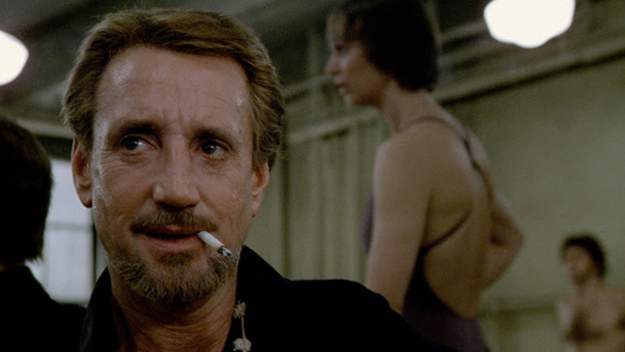
All That Jazz
To parallel Here & Now & Then, I begin Queer & Now & Then with 1979 for the perfectly random yet logical reason that it’s the year I was born, and therefore a year that I have an emotional, rational connection to but which I naturally couldn’t possibly remember or understand. There are many potential points of entry for me in 1979 to excavate perceived queerness: Hal Ashby’s Being There and the blithe sexual indifference of Chance Gardner; Sigourney’s butch proto-feminist icon Ripley in Alien; the coded queerness in Dennis Christopher’s ethereal, opera-loving Dave in Breaking Away; the fluid, anything-goes sexuality of Bette Midler’s Janis Joplinesque rock star in The Rose. There’s even a relatively well-adjusted gay character: Meryl Streep’s no-nonsense, happily partnered, though undoubtedly Other-ed ex-wife in Manhattan. Any of these characters are worthy of entire essays, for the ways in which the films that house them either seem willing to have tentative dialogues with them and their existences outside the hetero narratives or are barely able to broach the subject.
But the film that immediately jumped to mind for discussion is Bob Fosse’s All That Jazz, a tricky masterpiece, whose queerness is at once literal and completely subordinate, whose genre (the musical) and milieu (musical theater) signify gayness, but which, being an autobiographical work from its writer-director-choreographer, is, at least on the surface, very straight. In fact, it’s one of the few films in American history that can be called perversely, uncommonly heterosexual.
It’s a wrenching, autobiographical work for its writer-director-choreographer, starring Roy Scheider as Fosse’s alter ego, Joe Gideon, a womanizing, pill-popping old-school showman sick of the old school who’s driven to put on a show if it kills him, which is exactly what happens. A portrait of the artist as a desert island shipwreck, All That Jazz is a musical so from-the-heart that we literally get to see its protagonist’s exposed heart (during a graphic surgery scene), and as a personal statement about Fosse’s own neuroses around his life, love, and work, it necessarily takes as one of its central focuses his complicated identity as a philandering straight man in a musical theater environment of mostly women and gay men. (“How dare you use my telephone to call someone who’s not gay?” Gideon jealously barks at girlfriend Ann Reinking at one point.) What felt most revelatory and refreshing about the film when I watched it at a young age—and what makes it a relief to watch today—is the blithe, matter-of-factness with which it treats this material. The overt gayness of the Broadway scene, of the dancers, of the composers and lyricists, of the other directors and producers, is a given, never made outré or kinky. It likely functions this way to make Fosse/Gideon stand out and sparkle all the more (his straightness is his queerness); yet it’s also the kind of casual depiction of a milieu that could only have been made by a filmmaker who so deeply knows it. “I wouldn’t say you’re a faggot, but you do have a lot of feminine characteristics, right?” an actor acquaintance says to Gideon while he’s in the hospital after his first heart attack; Gideon has no response to speak of. (The actor is played by Cliff Gorman, originally in the stage and screen casts of the landmark gay play The Boys in the Band, to add a little intertextual interest.) It’s a constant negotiation of identity that’s just part of the everyday. The usual social rules around masculine/feminine, straight/gay don’t apply as stringently here.
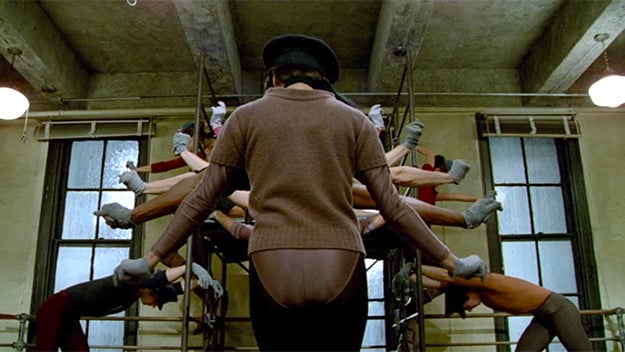
All That Jazz
The queer straightness of All That Jazz is clear from the very beginning, the virtuoso “On Broadway” number, featuring some of the most dazzlingly rhythmic editing in all of musical cinema, fragmenting the bodies and movements of the endless rows of dancers auditioning for Gideon’s next show. Gideon is clearly letting his libido lead in choosing the girls he wants (even asking for their home phone numbers as part of the process), but Fosse himself is abstracting bodies into one magnificently, fractured mass that moves by so quickly it could almost be genderless: arms and hands, legs, feet, spinning torsos. There’s a liberality to the way Fosse films the lithe figures of the dancers throughout the film, never more so than in the centerpiece number “Take Off with Us,” a kitschy, catchy, Kander-and-Ebb-esque bauble performed in a rehearsal space for the show’s producers, full of raunchy double entendres about airline travel and sex. Gideon can only make the number palatable to himself, however, by tacking on the less accessible, fog-enshrouded, hypersexual “Air-otica” piece, taking the suits by surprise with nudity and lewd choreography, culminating in A Chorus Line’s Sandahl Bergman gyrating topless atop some scaffolding. Gideon/Fosse’s most daring gambit is to include same-sex couplings in this sweat-drenched, purely erogenous number: the barely dressed dancers in the number’s variety of pas de deux speak their names as they look in each other’s eyes and tenderly touch (“My name is Jennifer.” “My name is Rima.“ “Gary.” “John.”), lending them a strong intimacy. There’s a singular power to seeing muscular men in thongs and jockstraps holding, hugging, and lifting each other’s bodies in a Hollywood studio film; it’s the quintessential scaring-the-straights scene, and it functions as meta-commentary, with its groaning producers worrying over losing the matinee audience undoubtedly predicting the discomfited responses of the movie’s eventual audience. The scene even has a terrific queer punchline: while we hear an offscreen voice complain “Sex, sex, sex…doesn’t he ever think of anything other than sex?” a male producer locks eyes with a sweaty, half-naked male dancer and sprays a little Binaca in his mouth—acknowledging that for every shocked breeder out there, there was undoubtedly a viewer very much enjoying himself.
That this sequence is shoved in our faces by a straight male genius with a chip on his shoulder doesn’t minimize its impact; it creates a productive cognitive dissonance for a mainstream movie audience used to having its sexual categories more cleanly delineated. According to Fosse biographer Sam Wasson, Fosse had shut down production on the film for three weeks just to rehearse this number, worrying already antagonized producers. Essential to the film’s overall effect, the kinetic “Air-otica” scene—which used more than 25 camera setups—is itself a queer landmark, a microcosm for a film that feels largely unconcerned with its audience’s comfort level.
Unlike another fantasy-life-of-the-artist film, such as Fellini’s 8 ½, a clear model here, there’s little triumph in creativity in All That Jazz, just Fosse’s acute fear that it all wasn’t enough. The final passage of the film—Gideon’s extended trip toward the great unknown, a climactic, death-obsessed extravaganza done up in gold lamé and jazz hands—points toward freedom and happiness away from the constraints of marriage, fatherhood, and womanizing, the trappings of Gideon’s heterosexuality. The queerest thing about Fosse’s film is that its queerness might be the least queer thing of all.
Michael Koresky is the Director of Editorial and Creative Strategy at Film Society of Lincoln Center; the co-founder and co-editor of Reverse Shot; a frequent contributor to the Criterion Collection; and the author of the book Terence Davies, published by University of Illinois Press.







